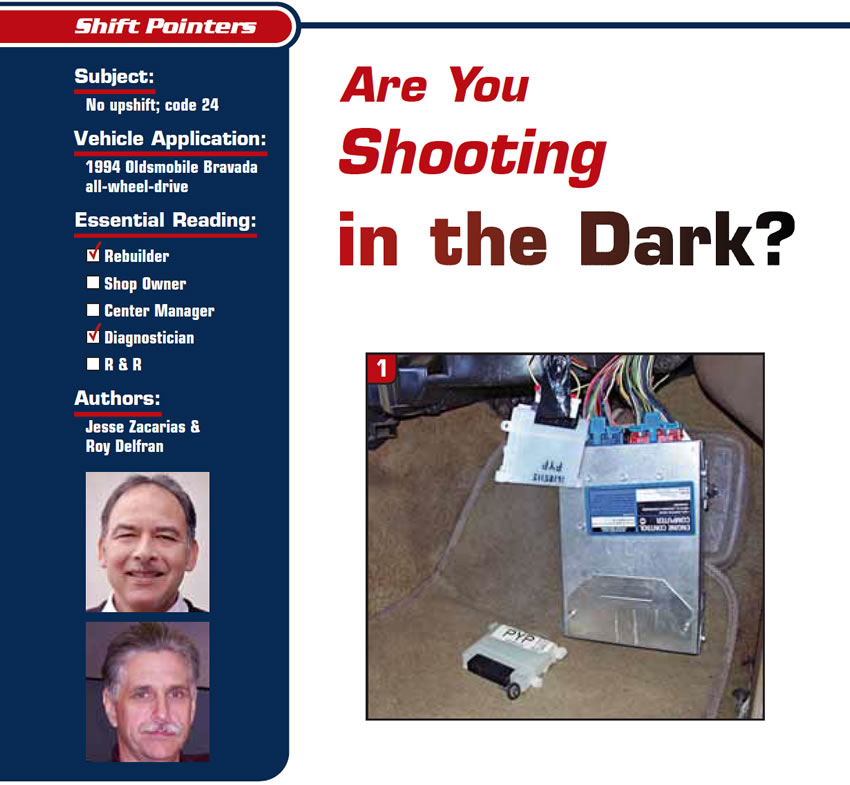
Shift Pointers
- Subject: No upshift; code 24
- Vehicle Application: 1994 Oldsmobile Bravada all-wheel-drive
- Essential Reading: Rebuilder, Diagnostician
- Authors: Jesse Zacarias, Roy Delfran
Knowing how an electronic component is supposed to work is very important when you are troubleshooting it for a problem. It can make the difference between replacing parts because you know they are bad and replacing them because you think they are bad. Half the battle in troubleshooting a device is knowing how it’s supposed to work, what to expect from it, what is normal and what is not.
That means that we have to take the time to do a little research, and that information can be used in troubleshooting the problem.
Let me use the following example to demonstrate this:
A local automotive-repair shop brought us a 1994 Oldsmobile Bravada all-wheel-drive, with the powertrain control module (PCM) and vehicle-speed-sensor buffer (VSSB) hanging from the dash (see Figure 1).
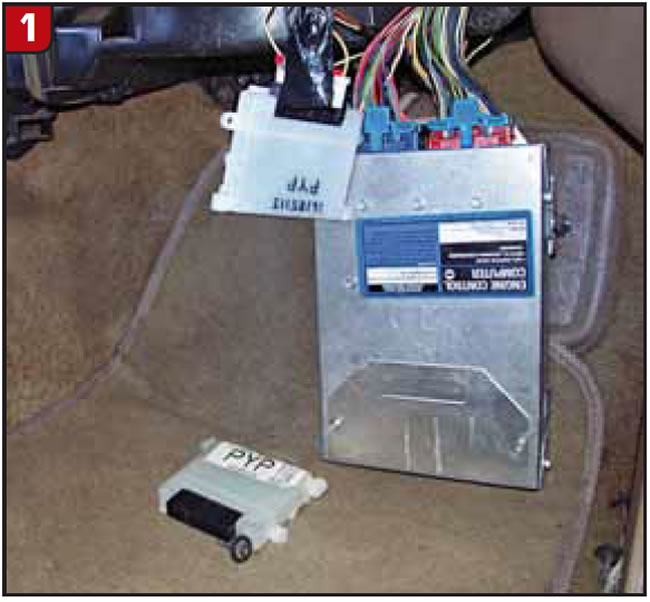
They told us that they had installed a remanufactured transmission they had bought from a well-known remanufacturer, but the transmission would not upshift and the PCM showed a code 24. They also said that they had already replaced the vehicle-speed sensor (VSS), the VSSB, the PCM and finally another transmission, but the problem was still there. After battling the problem for about three weeks, under the guidance of the remanufacturer’s tech department, they decided to bring it to us.
By taking the time to gather information from the vehicle, we noticed that when we drove it, the instrument panel showed a vehicle-speed reading (see Figure 2).
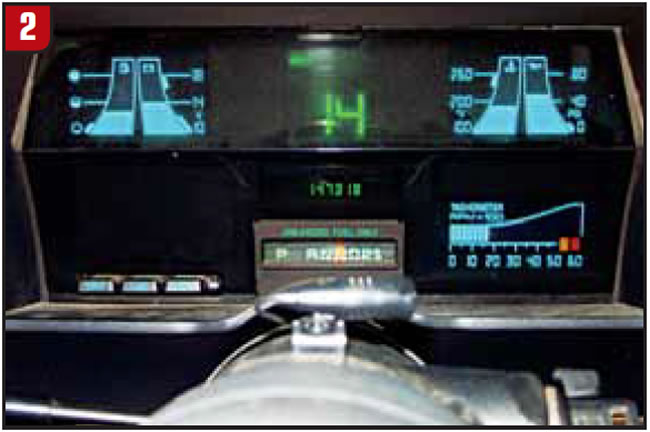
We connected the scan tool and found only code 24 (VSS circuit low). We also noticed that when looking at the engine parameters we could see a vehicle-speed reading that coincided with the instrument panel (see Figure 3), but when we looked at the transmission parameters there was no reading for vehicle speed or output-shaft speed (see Figure 4).
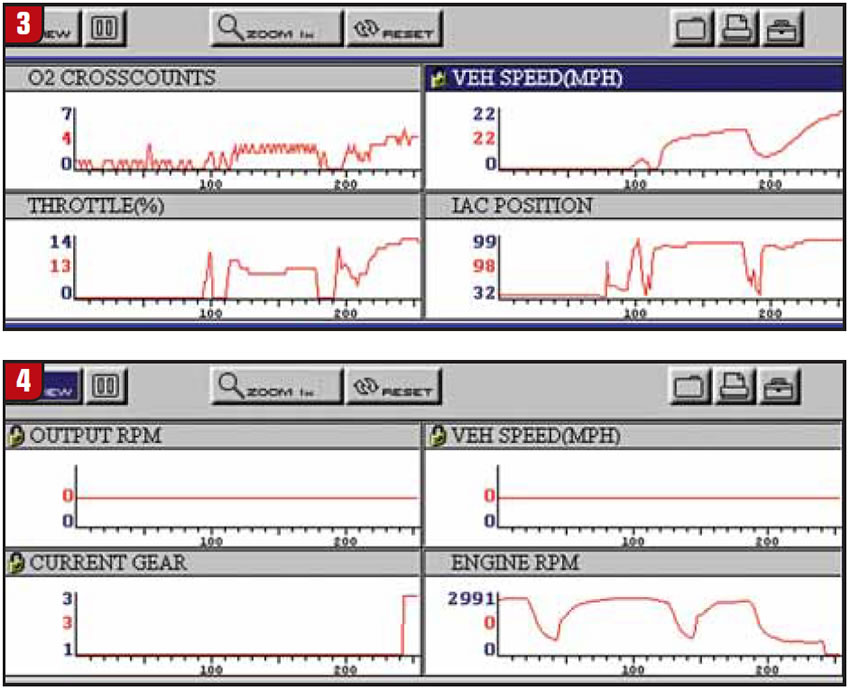
We then took some time to go to our library to find out how the VSSB was supposed to work (coffee on hand, of course). Please refer to Figure 5 for the following explanation. Our research found that the VSS reads output-shaft speed and sends an isolated alternating-current (AC) signal to the VSSB. The VSSB then changes this AC signal into a direct-current signal that the PCM and instrument panel can read. The VSSB sends out three signals. One, consisting of 2,000 pulses per mile, is sent to the PCM through pin C11 at the buffer and pin F13 at the PCM for use by the engine. The second signal also is sent to the PCM through circuit 437 and pin F12. It consists of 40 pulses per revolution (PPR), which coincides with the number of teeth on the exciter on the output shaft. This signal is used to control the transmission shifting. The third signal is sent to the instrument panel via circuit 824 for speedometer reading.
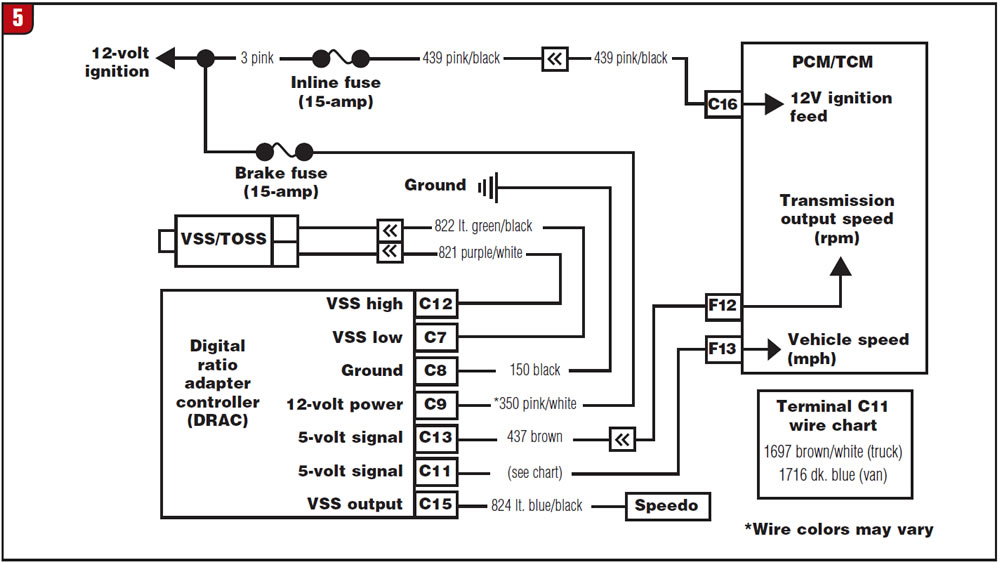
We also found out that code 24 or 72 will set if a fault exists in the VSS-circuit 40-PPR line (circuit 437). Code 24 will set when no vehicle speed is detected at start-off, and code 72 sets when vehicle speed has been detected but then lost.
With this information in hand, together with what we already knew from our initial road test and data gathering from our scan tool, we knew we had a problem in circuit 437. All we had to test for was a signal at PCM pin F12, but for the purpose of this article we hooked up our Snap-On MODIS, using its four-channel scope capabilities to be able to read all three signals simultaneously (see Figure 6).
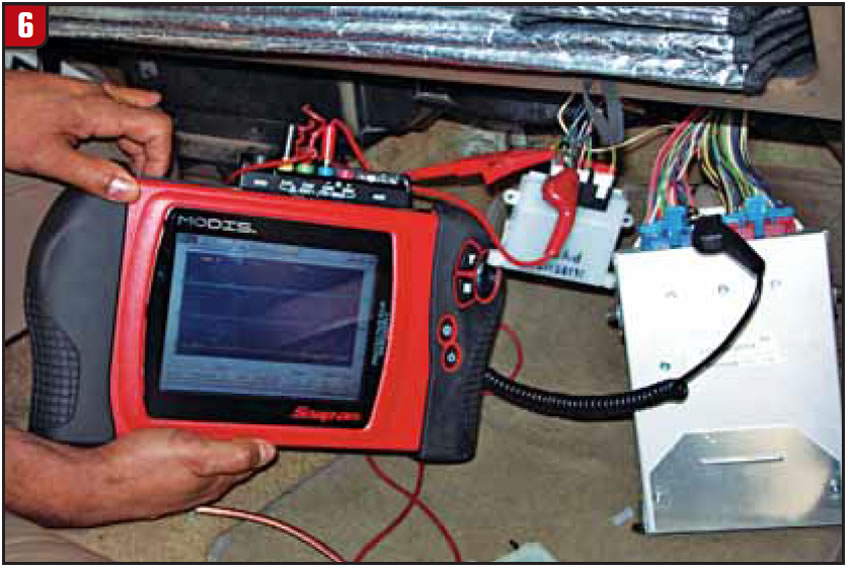
Channel 1 and 2 leads were connected at the buffer, since we knew we had no problem there.
Channel 1 (yellow) is reading the speedometer that the engine parameter sees (C11 at buffer).
Channel 2 (green) is reading what the instrument panel sees (C15 at buffer).
Channel 3 lead was back-probing PCM pin F12 to make sure the signal was getting to the PCM.
Channel 3 (blue) is reading what the transmission parameters see (F12 at PCM) (see Figure 7).
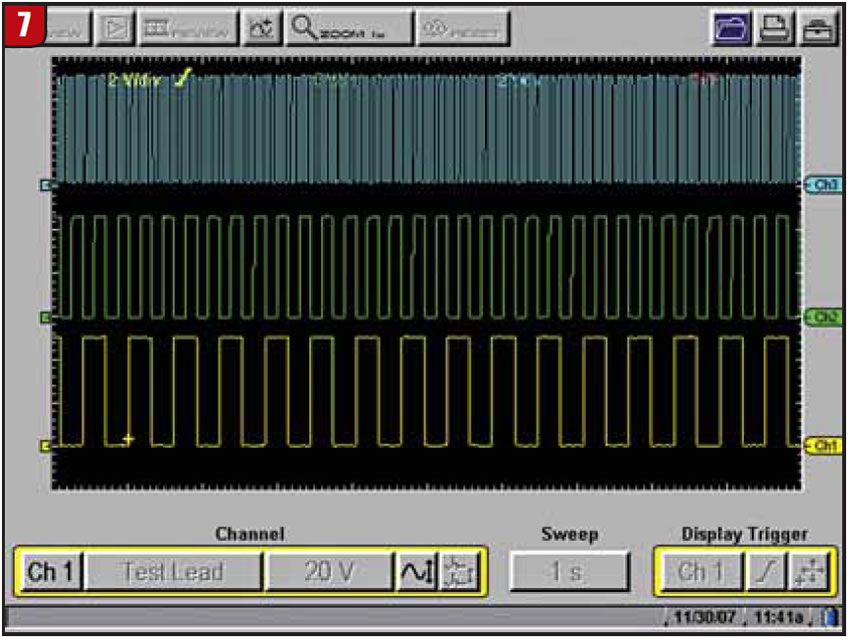
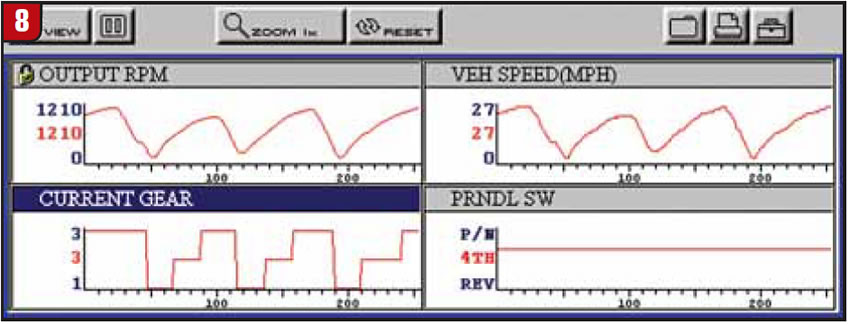
The readings on the scope showed no problem, up to where the probes where connected. However, the connector and PCM pin F12 could have a bad contact, something to consider – especially since the shop had replaced the PCM.
We removed the wire (circuit 437) from the connector and physically checked for a good contact to the PCM. It had a good, tight connection when it was connected to the PCM pin, showing a good contact. We noticed that the PCM was an aftermarket unit. Could it be bad? After all, the tests all pointed to a bad PCM (never doubt your meter’s readings). We ordered a PCM from the local dealer and installed it – problem solved. The PCM had output-shaft and vehiclespeed readings under transmission parameters,
and the code 24 was gone.
When we delivered the vehicle and told the shop what we found, they mentioned that the PCM had been replaced a few months ago to correct an engine problem. Sure would have been nice to be told that at the beginning. Oh, well, happy hunting.

Jesse Zacarias is the owner of Elec-Tran Diagnostics in Gilroy, Calif. Roy Delfran is with Snap-on Diagnostics’ Ask A Tech Community Web Forums (http://askatech.snapon.com).













